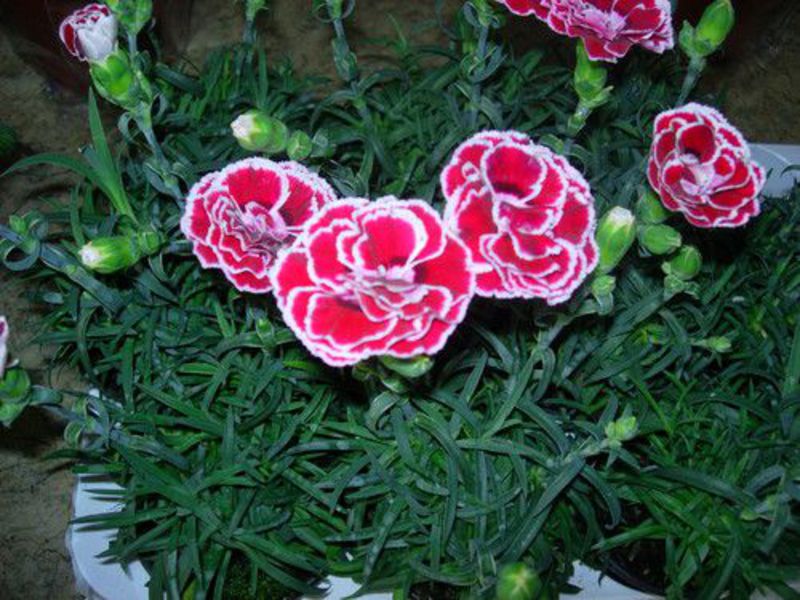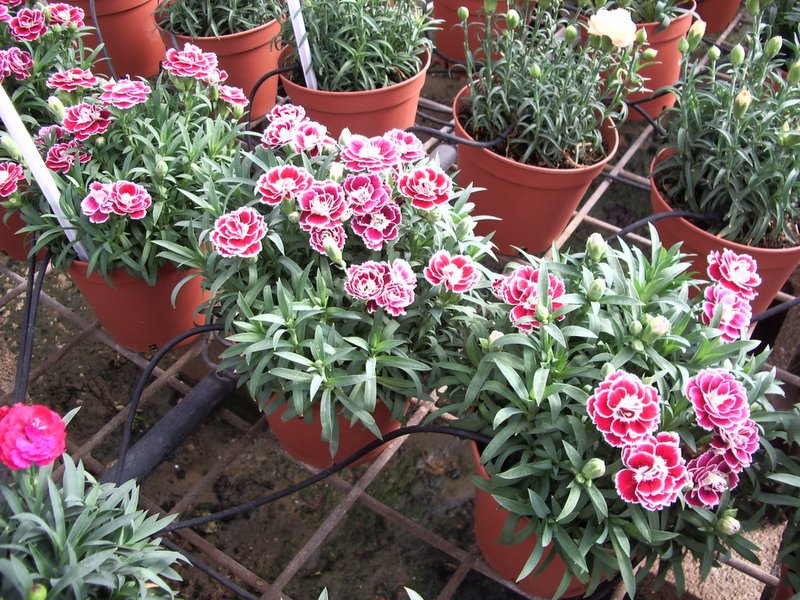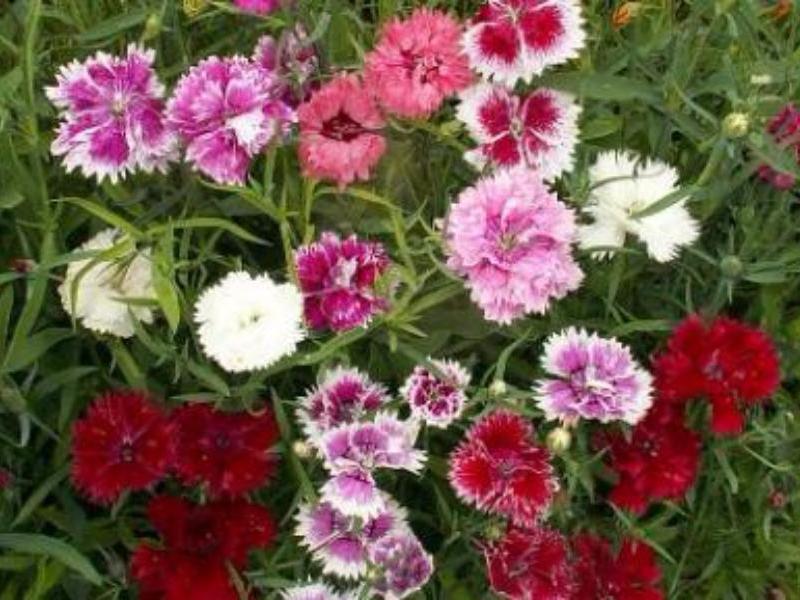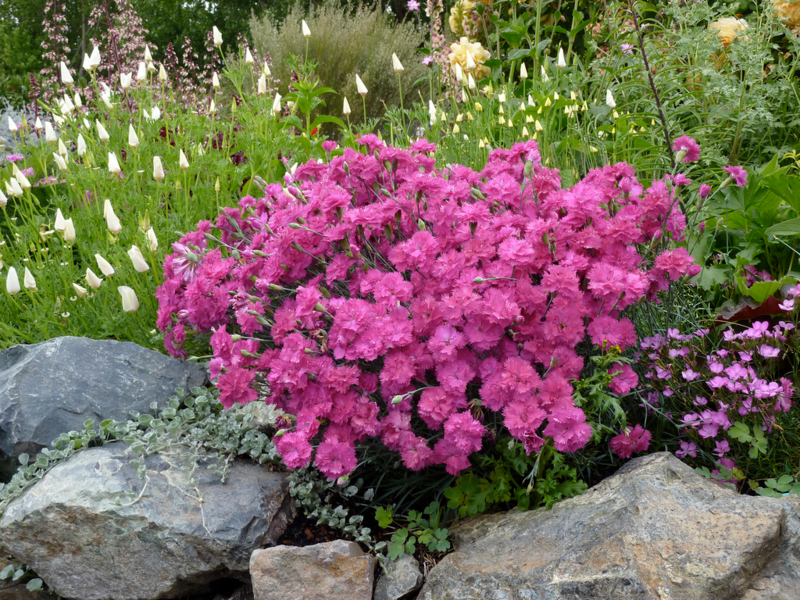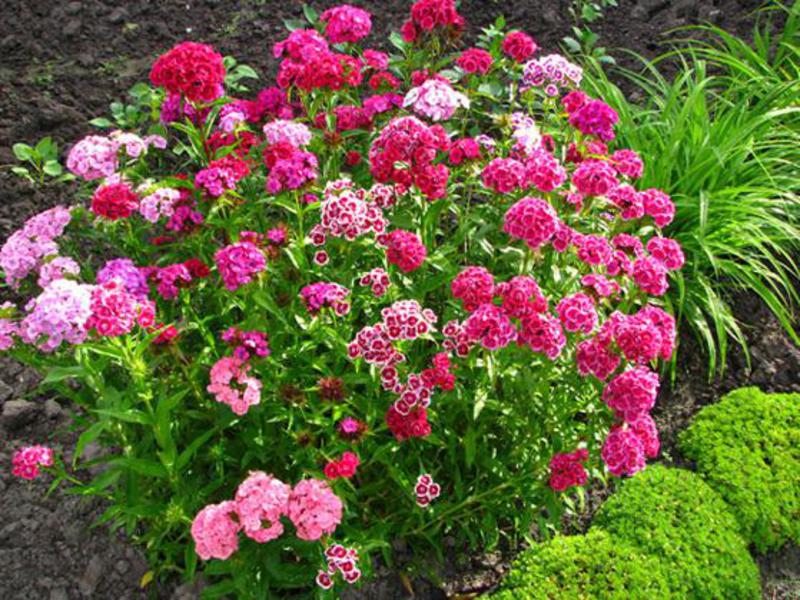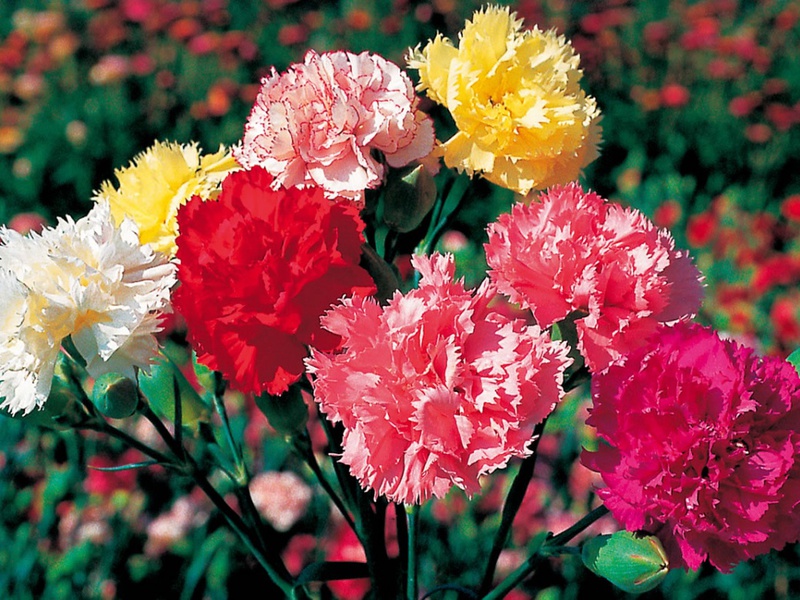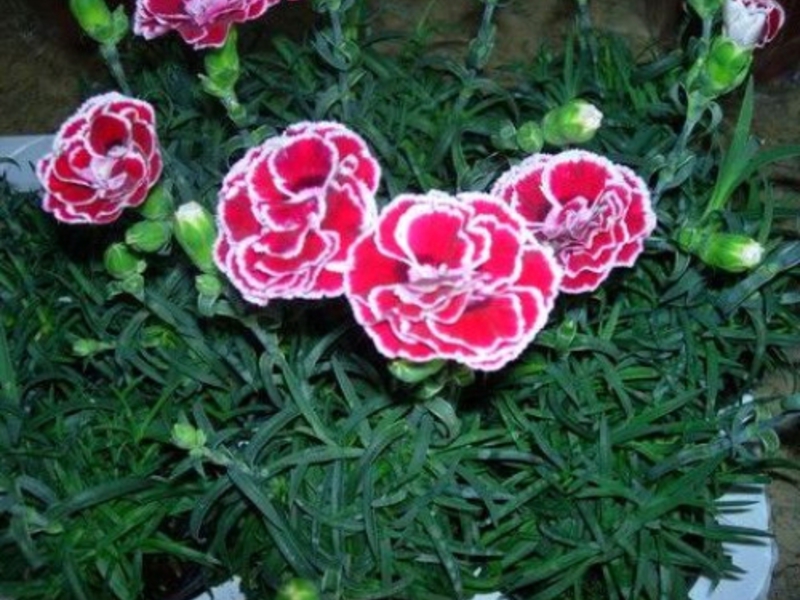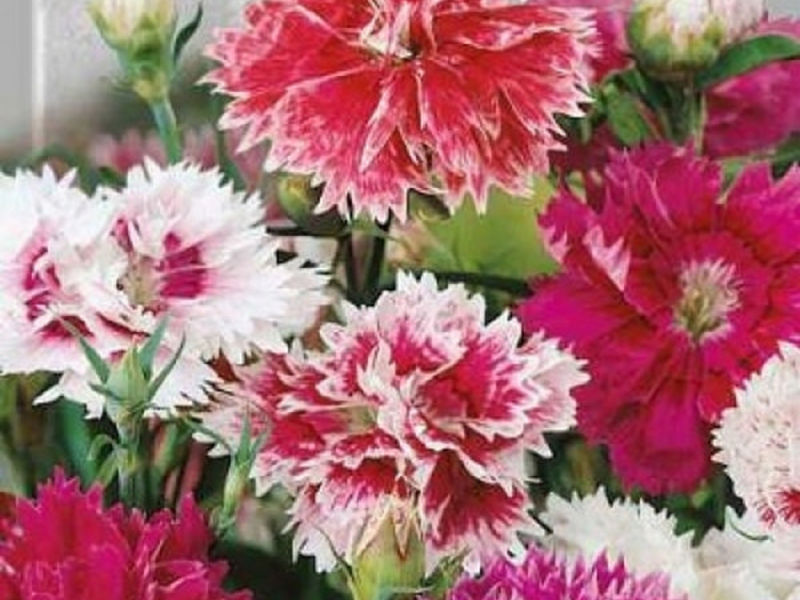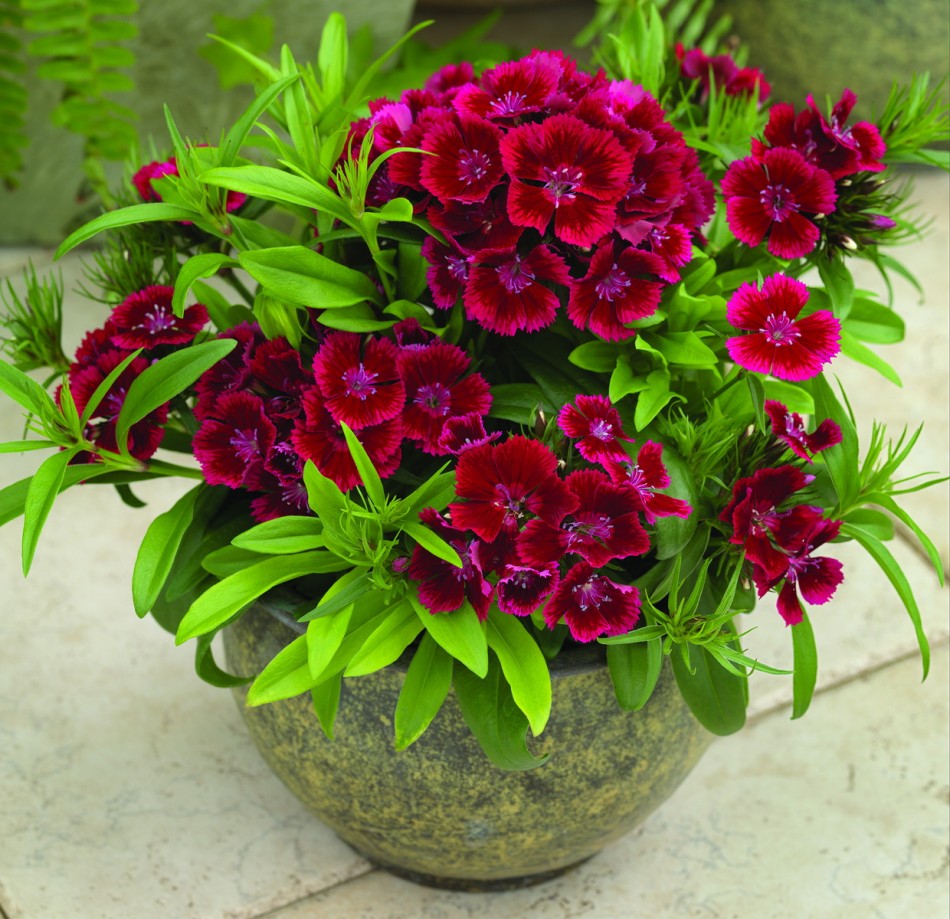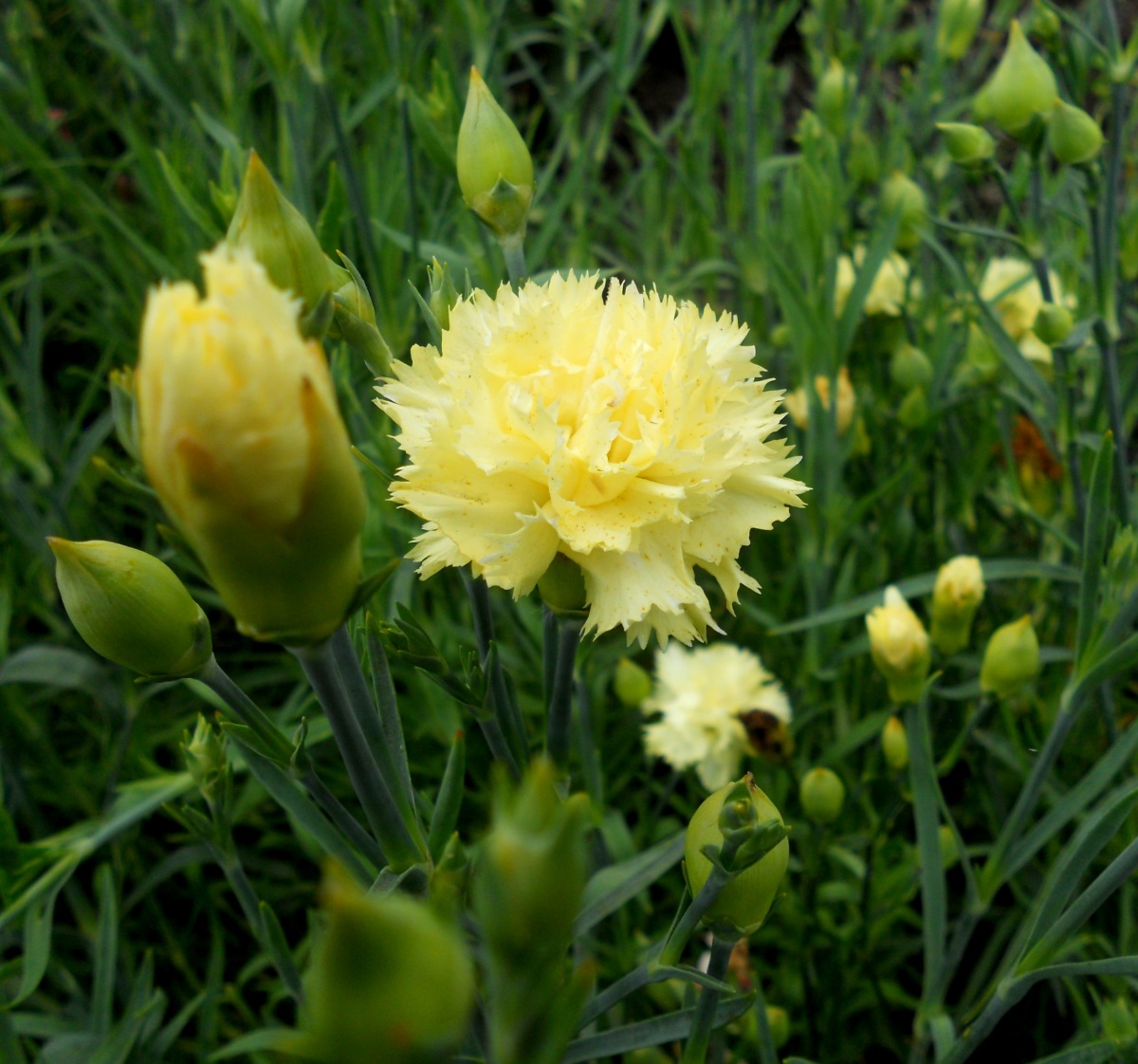Each owner of a private house or summer cottage has a flower bed. Growing flowers is one of the favorite activities of any gardener. Each of them has their own favorite flowers, but they are all good and beautiful in their own way. Chinese carnation grows in almost every garden, it is very popular. We will talk about its features in care and cultivation in the article.
Chinese terry carnation
This type of perennial plant belongs to the clove family, but there is also annual flower species... As the name suggests, the carnation was introduced to Europe from China in the 18th century. It is a small branchy bush that can grow from 15 to 50 cm, it all depends on the variety of flowers. In total, there are almost 300 types of carnations, but every year there are more and more varieties. They are obtained by the method of selection and hybridization. New varieties obtained in this way are distinguished by a long flowering period.
Chinese carnation almost odorless... Flowers, she has single or collected in bunches of 2-4 pieces. The photo clearly shows that the double carnation mix has buds consisting of a group of petals. The flower size can be from 1 to 4 cm in diameter. Lanceolate narrow leaves are opposite. Dwarf species grow low, bushes reach only 15 cm. Other species can grow up to 0.5 meters. The good thing about Chinese carnation is that it can be grown not only in the garden, but also on the balcony in a pot.
The Chinese carnation blooms from June to August. As you can see in the photo, inflorescences can be of several colors:
- white;
- purple;
- pink;
- burgundy;
- lilac.
A distinctive feature of the Chinese terry carnation - slits and stripes on the petals... The stem of the plant is erect, with narrow lanceolate leaves of a dull green color on it.
Growing from seeds
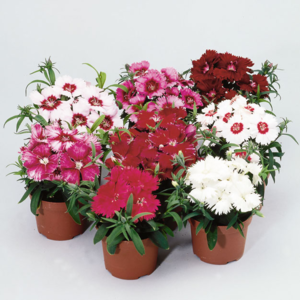 Chinese carnation can be grown in several ways:
Chinese carnation can be grown in several ways:
- buy ready-made seedlings:
- dividing the bush;
- sow seeds in open ground;
- grow seedlings from seeds yourself.
The last method of growing Chinese carnation should be dealt with in more detail. Planting seeds of perennial Chinese carnation is necessary start in March... Seeds are sown in boxes with a drained and nutritious substrate. They should be covered with a light layer of earth. The soil is well moistened and the container must be covered on top.
The optimum temperature for germination is 16-20aboutC. After 7-10 days, the cover can be removed and it is desirable to lower the temperature to 14-15aboutC. Seedlings are ready for picking when they have 2-3 true leaves. It is planted in peat pots with nutritious peat mixture. In order to plant seedlings in open ground, it must get stronger. It is best to plant it in pots in a permanent place.
You can also sow seeds in open ground in early May, she is not afraid of light frosts. The seeds are sown in an open nursery and then, when they germinate, they are transplanted to a permanent place in the flower garden.
Planting and leaving
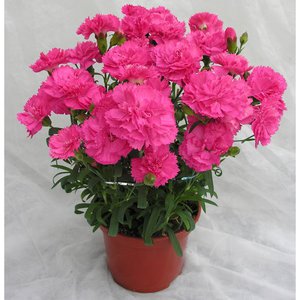 The most favorable time for planting in open ground considered the end of May... Before planting, it is imperative to prepare the garden bed and plant the seedlings at intervals of 20-30 cm. The distance between the seedlings will depend on the variety of carnations.
The most favorable time for planting in open ground considered the end of May... Before planting, it is imperative to prepare the garden bed and plant the seedlings at intervals of 20-30 cm. The distance between the seedlings will depend on the variety of carnations.
Watering should be done only as the soil dries up. Frequent and abundant watering negatively affects the development of the plant. In extreme heat, the amount of watering should be increased and the soil should not be allowed to dry out.
Caring for a flower is simple, the cultivation of a Chinese carnation is within the power of any novice gardener. It is very important to be attentive to the plant and timely carry out watering, loosening the soil, and removing weeds. The beautiful and fresh appearance of the flowers is a confirmation of proper care. If you pinch the tops of the stems of a carnation, then it will bush better. The plant loves partial shade and sun.
Flowers are very respond well to feedingif you don't add too many of them. The amount and proportion will depend on the fertility of the soil. It is recommended to feed the flowers 2-3 times a month. Calcium-based fertilizers cannot be applied in the first year of life.
To extend the flowering period of a carnation, it is necessary to cut off the stems with buds that have already faded. For propagation by seeds, you must leave the inflorescences you like and then collect them.
Chinese carnation tolerates winter very well in our regions. Before wintering, its stems are cut to 10 cm above the ground in late autumn. The bushes can not be insulated, but sawdust or peat, fallen leaves can be used to protect them from freezing in severe frosts. With the arrival of spring, the cover should be removed.
Like all carnation plants susceptible to some diseases:
- fusarium;
- rust;
- spotting;
- root rot;
- septoriasis.
If such diseases are found, then the damaged stems must be cut and removed. It is better to deal with spider mites and aphids with Bordeaux liquid.
The secret of popularity
The plant is very popular with gardeners, which is understandable. Unlike bulbs and other plant species, the flowering phase of a carnation is very long. The flower is ideal for many purposes. It is often used in the design of landscape design... The Chinese carnation is always appropriate in city parks, squares, it is planted in the form of borders. The photo clearly shows that it fits perfectly into the alpine slide. Thanks to its bright color, it looks spectacular for island and bouquet planting on lawns.

